To mark the 75th Anniversary of 1939, we've asked some ABAA members to discuss publications from that momentous year. Garrett Scott, a prominent Ann Arbor bookseller, offers a divagation upon At Swim-Two-Birds, Flann O'Brien's proto-post-modern first book– published in 1939.
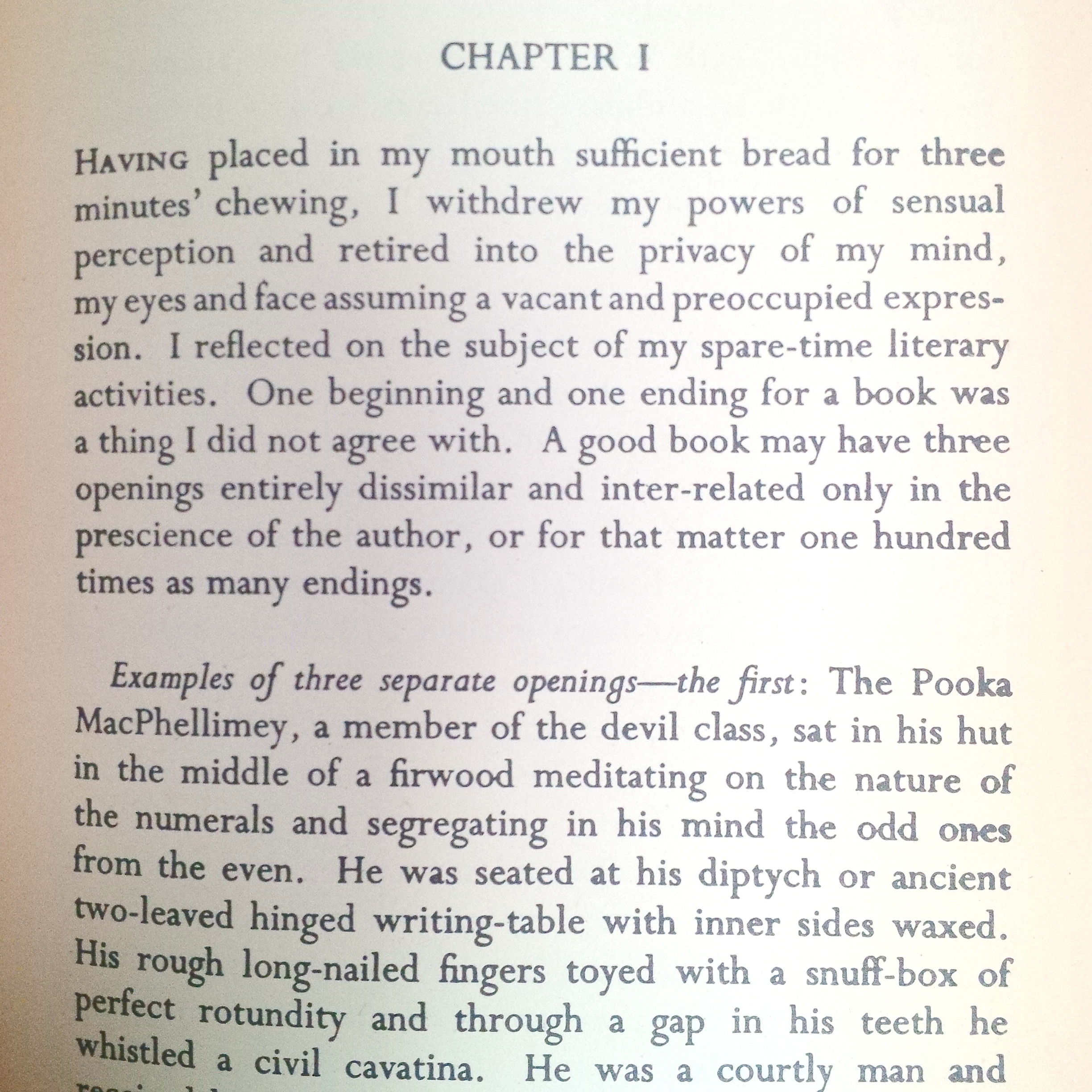 Biographical reminiscence, part the first:
Biographical reminiscence, part the first:
Sometime in 1991, I had taken up temporary residence in a storage closet in a university-owned cooperative house. This was during a period in college in which I was neither enrolled in any classes nor strictly speaking in the eyes of the university a resident of the university-owned cooperative house.
The storage closet was situated within one easy extension-cord’s length of a hallway electrical outlet and thus easily outfitted with a small fan and a reading lamp and a clock radio. A spare mattress fit neatly between the stacks of cardboard boxes and assorted lumber. The storage closet had the added utility of providing my then-girlfriend with a place to lodge me when she sought respite from my company. One evening prior to another bout of rustication she endeavored to occupy me by handing me a paperback copy of a book written by a man named Flann O’Brien, a member of the Irish nation. The name of the book was At Swim-Two-Birds. She told me the book was about a college student trying to write a book.
Nature of her summary: Perfunctory.
The figure of speech she had inadvertently employed: Understatement.
And thus with nothing but the hum of the fan beside my mattress to keep me company did I sit up through the night and read the book straight through until I emerged the next morning from the storage closet blinking in the light of day and looking about in wild surmise. The buttoned-down metafictions of John Barth and the minimalism of the then recently-deceased Raymond Carver so beloved of my professors had in this new dawn been shoved aside for Flann O’Brien.
End of biographical reminiscence.
Relevant extract from an article by Allen Barra published in 2013 in the Atlantic, a journal once edited by James Russell Lowell, a man in Boston, Massachusetts:
Only a fool would attempt to describe the plot of At Swim-Two-Birds.
End of relevant extract.
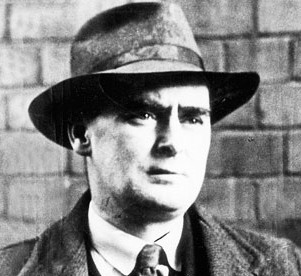 Flann O’Brien was the pen-name of Brian O’Nolan, a person born in County Tyrone, Ireland in 1911. He died in 1966. He published his first book At Swim-Two-Birds on March 13, 1939 with the London firm of Longmans. The novel was accepted at Longmans on the recommendation of Graham Greene, a writer from England. The book sold only 244 copies before the Germans bombed the Longmans warehouse in 1940 and destroyed most of the remaining edition. What unbound sheets as remained of this first printing were later bound up in the second issue gray cloth binding rather than in the black cloth binding of the first issue. Either issue of the first edition commands a fairly healthy price on the antiquarian market, though as one astute observer of the book trade has noted of the prices asked for At-Swim-Two-Birds, “The trouble with all this is that it is a book whose greatest devotees seldom have a lot of spare change, and that's a fact.”
Flann O’Brien was the pen-name of Brian O’Nolan, a person born in County Tyrone, Ireland in 1911. He died in 1966. He published his first book At Swim-Two-Birds on March 13, 1939 with the London firm of Longmans. The novel was accepted at Longmans on the recommendation of Graham Greene, a writer from England. The book sold only 244 copies before the Germans bombed the Longmans warehouse in 1940 and destroyed most of the remaining edition. What unbound sheets as remained of this first printing were later bound up in the second issue gray cloth binding rather than in the black cloth binding of the first issue. Either issue of the first edition commands a fairly healthy price on the antiquarian market, though as one astute observer of the book trade has noted of the prices asked for At-Swim-Two-Birds, “The trouble with all this is that it is a book whose greatest devotees seldom have a lot of spare change, and that's a fact.”
Further relevant extract from the plot summary by Allen Barra:
The narrator is a lazy sod who can't seem to finish his book, control his characters, or tie all the strands of his book together. One of those plot streams involves Dermot Trellis, a writer of pulp westerns. {An erroneous statement, as William Tracy is the character who writes pulp westerns and is thus the creator of the characters—or perhaps sub-characters—Dublin cowboys Shorty Andrews and Slug Willard; Trellis instead is a voluntarily bedridden moralist who considers all colors except green as evil and thus confines his reading only to books in green covers: “Although a man of wide learning and culture, this arbitrary rule caused serious chasms in his erudition. The Bible, for instance, was unknown to him.”} Trellis's characters rebel against their creator; wanting control over their own lives, they drug him to make him sleep so much he can’t write his book. But Trellis fights off slumber long enough to bring a female character, Sheila Lamont, into existence; she becomes real, or at least real enough to bear his child ("blinded by her beauty"—i.e. of his own fictional creation—Trellis loses control and assaults her).
End of extract.
William Saroyan visited Dublin in 1939 and O’Nolan befriended Sayoran. On Saroyan’s return home he recommended the publication of At Swim-Two-Birds in America, but the parturition of this title on our shores did not occur until 1951, and then only at the hands of a small outfit called Pantheon who did not even bother to put their publication date on the novel. But another edition of At Swim-Two-Birds was published in London in 1960 and met with somewhat better success, and with that something of a modest Flann O’Brien renaissance was soon underway.
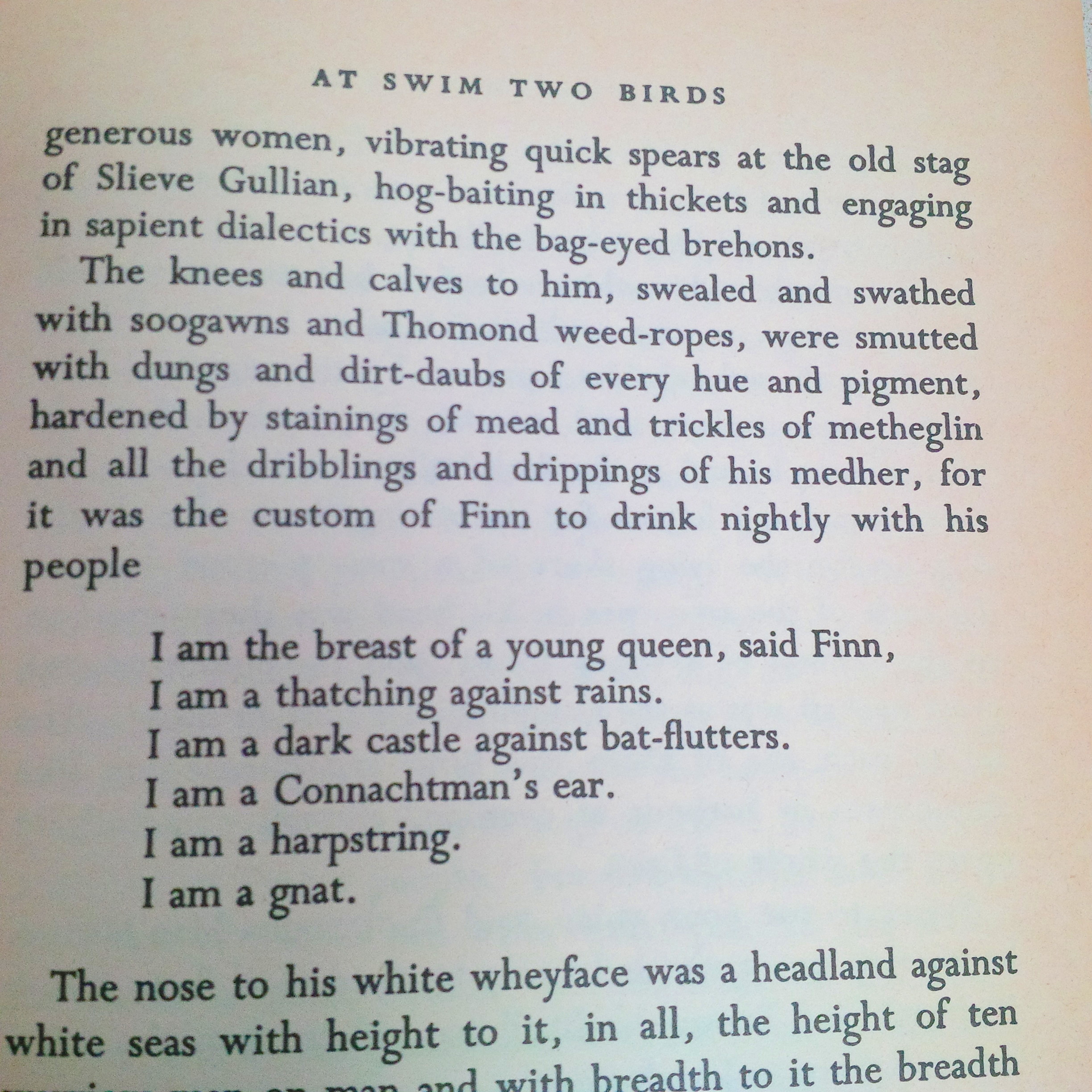 Sam Beckett, who often wrote in French though he was also Irish, had earlier given a copy of At Swim-Two-Birds to James Joyce, another writer from Ireland. Joyce thought the book was brilliant and funny. Joyce died in 1941.
Sam Beckett, who often wrote in French though he was also Irish, had earlier given a copy of At Swim-Two-Birds to James Joyce, another writer from Ireland. Joyce thought the book was brilliant and funny. Joyce died in 1941.
Third and final extract from Allen Barra’s summary of the plot:
In time, Orlick is born, inheriting his father's—and presumably the unnamed narrator's and Flann O'Brien's—gift for writing fiction. Orlick writes a novel in which all of Trellis's creations put Trellis on trial and punish him for daring to manipulate him. But, as he is about to be executed, Trellis's creator, the student, unexpectedly passes his exams with flying colors and . . . I don't want to spoil it for you. Actually, I'm not sure that I have all this down correctly {indeed, ed.}. . . . I'm also still not sure exactly how the two American {sic} cowboys appear or why the mythical Irish hero Finn McCool jumps in . . . or what part the Pooka (a species of human Irish devil endowed with magical powers) named Fergus MacPhellimey plays. (But I can testify that an invisible good fairy who lives {or rather temporarily travels, ed.} in MacPhellimey's pocket appears at opportune times to counter the Pooka's evil.) {Rather, the fairy loses a bet in a game of poker and thus its claim on Orlick’s soul and any opportunity thus to “counter” the Pooka’s “evil.”}
End of extract.
O’Nolan also wrote a popular newspaper column under the name Myles na gCopaleen. He lost his civil service job in 1954. He lost the job either because of something he had written in his column or because of his alcoholism. His novel The Third Policeman was written in 1940 but went unpublished until 1967. The Third Policeman, in the estimation of those literary persons qualified to make such pronouncements, may perhaps be considered more brilliant than At Swim-Two-Birds.
O’Nolan wrote other works of literature as well, including the Gaelic satire An Béal Bocht (1941) (this published in English translation in 1973 as The Poor Mouth), as well as The Dalkey Archive (1964).
For those whose thirst for further Flann O’Brien knowledge drives them to seek further, the author of this sketch has cribbed much of the relevant bio-bibliographical information from such sources as Myles: Portraits of Brian O’Nolan, edited by Timothy O’Keeffe (1973), Anthony Cronin’s No Laughing Matter: The Life and Times of Flann O’Brien (1989), and the joint work of Peter Costello and Peter van de Kamp, Flann O’Brien: An Illustrated Biography (1987). One might also have recourse to the popular online search engines of our day, such as the Google, or indeed to the offerings of the booksellers on this fine website itself.
Are you quite finished with this pastiche in the manner of At Swim-Two-Birds itself?
Should I be?
Perhaps it would be best.
Indeed. Good-bye, good-bye, good-bye.
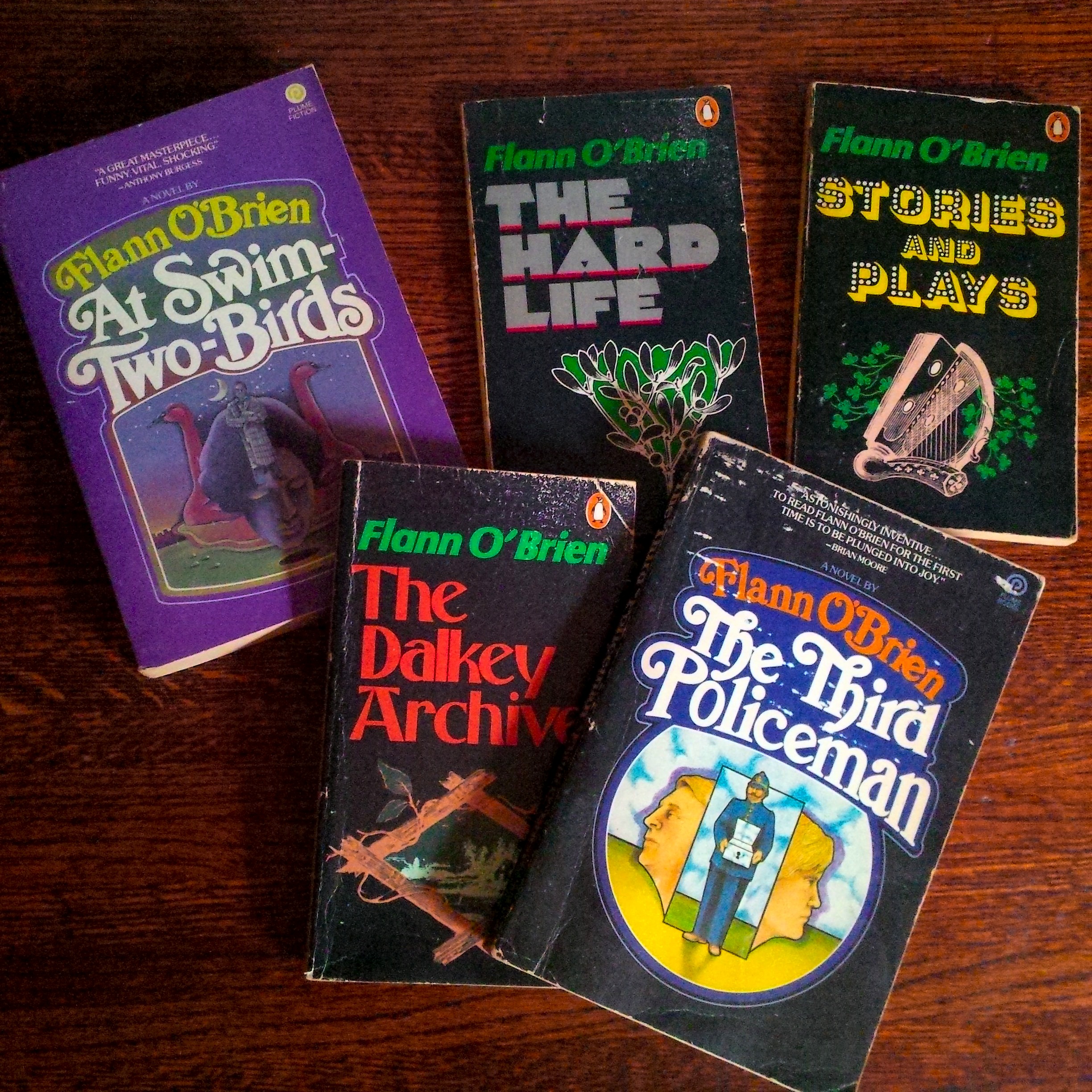


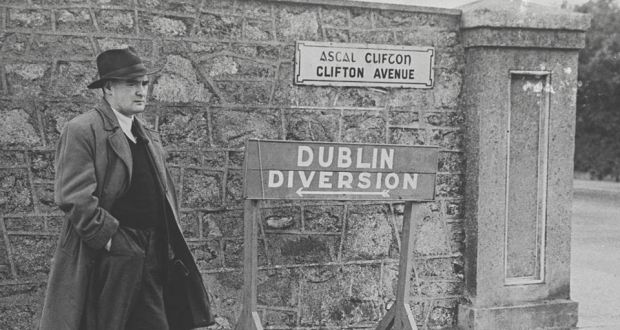
 Biographical reminiscence, part the first:
Biographical reminiscence, part the first: Flann O’Brien was the pen-name of Brian O’Nolan, a person born in County Tyrone, Ireland in 1911. He died in 1966. He published his first book At Swim-Two-Birds on March 13, 1939 with the London firm of Longmans. The novel was accepted at Longmans on the recommendation of
Flann O’Brien was the pen-name of Brian O’Nolan, a person born in County Tyrone, Ireland in 1911. He died in 1966. He published his first book At Swim-Two-Birds on March 13, 1939 with the London firm of Longmans. The novel was accepted at Longmans on the recommendation of  Sam Beckett, who often wrote in French though he was also Irish, had earlier given a copy of At Swim-Two-Birds to James Joyce, another writer from Ireland. Joyce thought the book was brilliant and funny. Joyce died in 1941.
Sam Beckett, who often wrote in French though he was also Irish, had earlier given a copy of At Swim-Two-Birds to James Joyce, another writer from Ireland. Joyce thought the book was brilliant and funny. Joyce died in 1941.